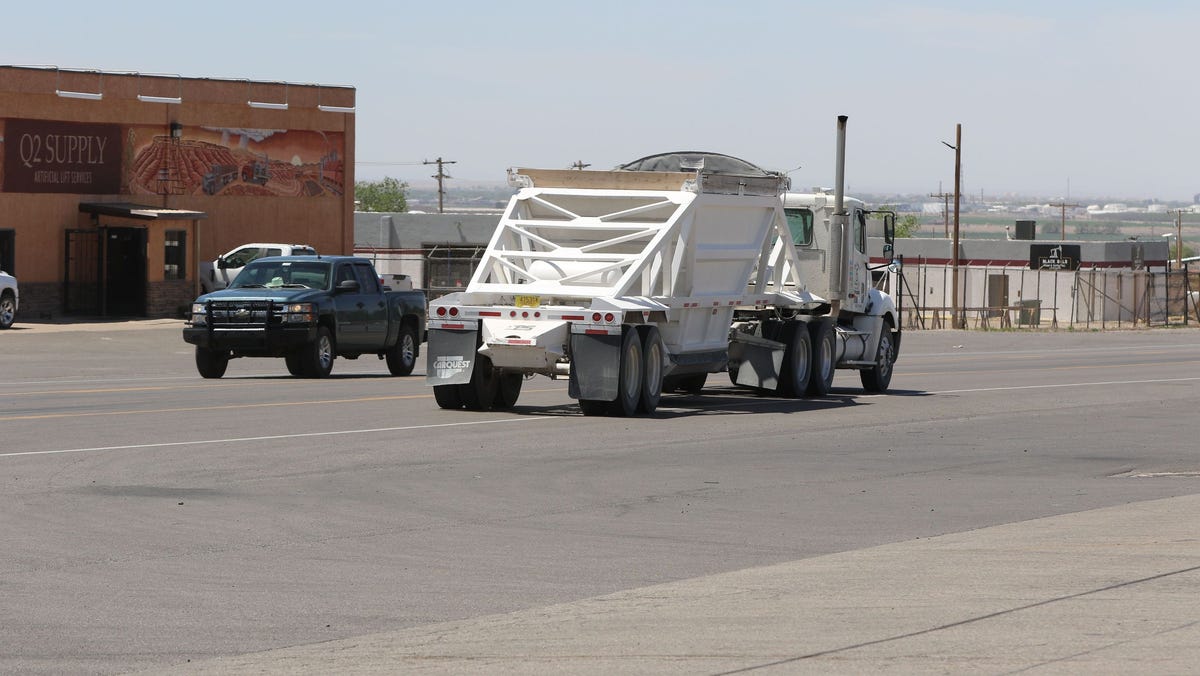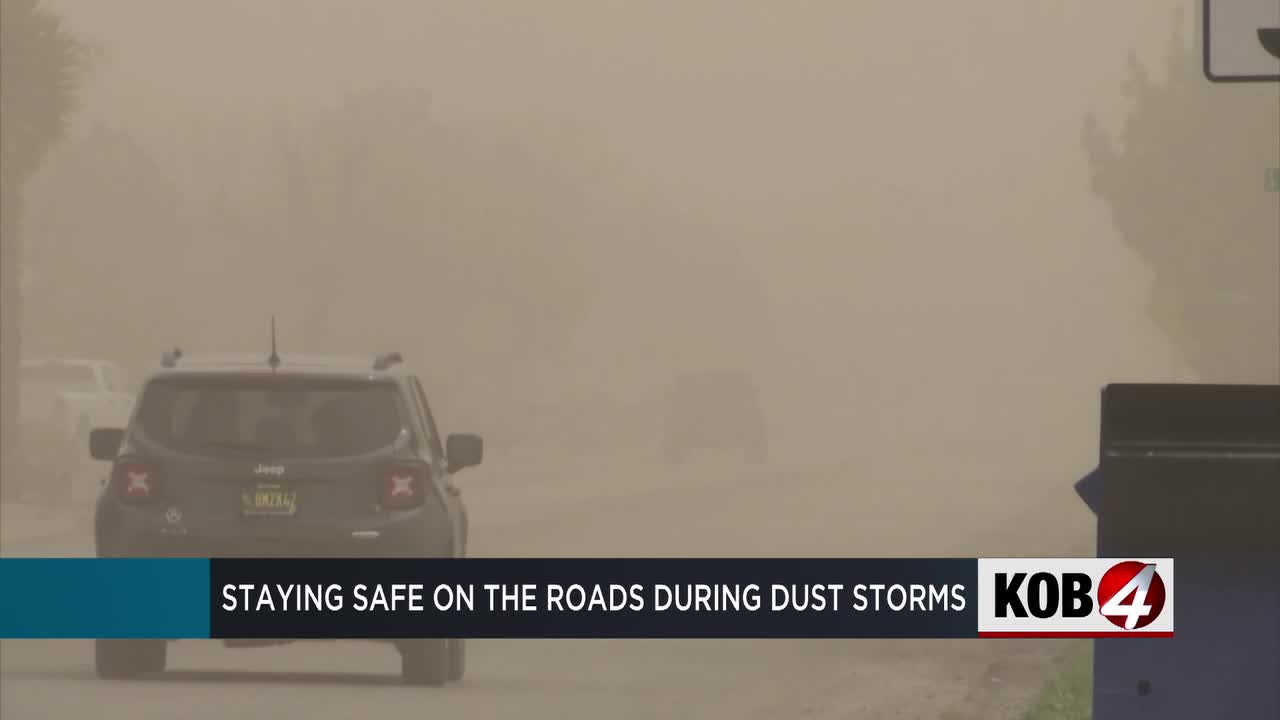New Mexico
Arsenic contamination persists in a New Mexico town's water supply

After years of arsenic contamination, New Mexico intervenes in Sunland Park’s water crisis.
Silvia Foster-Frau reports for The Washington Post.
In short:
- Sunland Park, a majority Latino community, has faced dangerously high arsenic levels in its drinking water for over 16 years, with minimal effective intervention.
- Local residents, including those suffering health effects, have repeatedly voiced their concerns at public meetings, questioning the utility’s commitment to resolving the issue.
- The state has recently stepped up enforcement, issuing significant fines and demanding stringent compliance from the local water utility.
Key quote:
“People are dying from this. We’re paying for something that’s poisoning us.”
— Elvia Acevedo, local resident
Why this matters:
Access to safe drinking water remains a challenge in various parts of the United States, particularly affecting low-income and minority communities. Long-term exposure to arsenic can lead to severe health effects, including cancer, skin lesions, developmental effects, cardiovascular diseases, neurotoxicity, and diabetes.
The risks are pronounced in regions where groundwater is the primary source of drinking water and arsenic concentrations are high, and Southwest U.S. communities and Hispanics are most likely to have arsenic-laden water.

New Mexico
Students Have the Right to Peacefully Protest, Says the ACLU of New Mexico
ALBUQUERQUE, NM – Today, following disturbing reports that New Mexico State Police and University of New Mexico (UNM) Police used teargas and arrested protestors on UNM’s campus, the American Civil Liberties Union (ACLU) of New Mexico warned university leaders and law enforcement that students have constitutionally protected rights to peaceful protest, expression, and speech on public campuses— even speech that some may find controversial or offensive.
The following statement can be attributed to Peter Simonson, ACLU-NM Executive Director:
“Students have the constitutional right to peacefully protest, speak, and express their opinions. The New Mexico Constitution extends even greater protections in this regard than the U.S. Constitution. Protest is a pillar of democracy and a fundamental freedom that has shaped the history of our nation. We call on New Mexico’s college and university leaders and police to respect students’ rights to publicly advocate for causes they believe in. The ACLU of New Mexico is closely monitoring the situation.
To be clear, not every form of speech is protected everywhere. However, we are disturbed by the recordings of this week’s arrests on UNM’s campus and will be investigating. Armed police in riot gear have no place at a peaceful campus protest. Arresting peaceful protestors does not make anyone safer. We urge university leaders to remain flexible and give students space to express their views given the volatility of this moment.”
If students believe campus administrators or law enforcement have violated their rights, ACLU-NM encourages them to submit a complaint on our website. Know-your-rights information for protesting on campus is here.
New Mexico
Torrance Co. leads as most dangerous for motorists. See what other counties made the list.

7 tips for driving on wet roads
Nearly 1.2 million traffic crashes occur each year on wet pavement with more than a half-million injuries and 5,700 deaths, according to data from the National Highway Traffic Safety Administration. Here are some tips for staying safe on wet roads.
Motorists traveling through Torrance County in central New Mexico are at a greater risk of injury or death by traffic accident, according to an analysis of fatal crash data.
H&P Law, a for-profit Las Vegas-based personal injury law firm analyzed data from Fatality Analysis Reporting System (FARS) and the Federal Highway Administration (FWHA) on the number of licensed drivers in New Mexico from 2017 through 2021 involved in fatal crashes, ranking the analysis’ results based on a 10,000 county population scale.
With a population of 15,000 people, Torrance County had 39 fatal crashes from 2017 until 2021, according to the analysis ― that’s a rate of 25.7 fatal crashes per 10,000 licensed drivers. That’s 126% above the state average of 11.36 per 10,000 people.
And Torrance County isn’t alone when it comes to rural roads in the state that allegedly pose a danger, though James Murray, spokesperson for the New Mexico Department of Transportation (NMDOT) District 5, said the analysis does not show the progress made to secure drivers who travel New Mexico roads.
Among the Top 10 “most dangerous counties” were Cibola, Socorro, McKinley, Sierra, Luna, Colfax, Quay, Taos and Rio Arriba.
New Mexico Department of Transportation challenges findings
Murray said NMDOT works to maintain state roads in Torrance County, helping to keep motorists safe and their vehicles in good condition.
“Just a few of the things our patrols do on a daily basis includes pothole repairs, mowing the grass on the shoulders to improve visibility, sweeping up dirt and dust from the shoulders to improve drivability,” he said.
Murray said in District 5, which encompasses Santa Fe and surrounding area, crews also repair right of way fences to prevent large animals from entering the roadway along with sealing roads to preserve structural integrity.
Interstate 40 starts in Wilmington, North Carolina and travels through Tucumcari, Albuquerque, Gallup and Grants and ends in Barstow, California.
“Almost 60 miles of I-40 runs through Torrance County and that it is a heavily travelled stretch of road, especially for large vehicles,” Murray said. That’s why the State in 2023 invested in completing a repaving project of 40 lane miles of roadway, which was removed and replaced, he said.
Other rural New Mexico counties make list for high rates of fatal crashes
Located west of Albuquerque, Cibola County, which ranked second in highest number of reported fatal crashes per population, reportedly had an average of 23.2 fatal crashes per 10,000 people.
Socorro County, ranked third, had a rate of 18.2 fatal accidents per 10,000 residents with 105 fatal crashes across the five-year period included in the analysis.
“The conditions of our roads are of great concern to me and I am troubled to see that Socorro County ranks among the most dangerous counties for drivers,” said State Sen. Crystal Diamond Brantley (R-35).
Brantley, of Elephant Butte, lives in Sierra County. With a population of around 11,000 people, Sierra County had 19 traffic crash deaths from 2017 to 2021 ― that’s a rate of 16.5 crashes per 10,000, and according to the analysis ranked fifth behind McKinley County at fourth with a rate of 17.1.
“In recent years, the (New Mexico) Legislature has prioritized our transportation infrastructure, and this past Legislative Session, we appropriated $205 million for road projects across the state,” Brantley said.
“However, this just a drop in the bucket when you consider the needs statewide.”
Brantley is a member of the Senate Finance Committee, and her District encompasses Luna and Sierra counties – both on the most dangerous list – as well as Hidalgo County and Doña Ana County.
Increased investment needed for New Mexico highways
Brantley said New Mexico’s interstates, interchanges and bridges can pose a hazard to public safety.
“We must ensure that the needs of rural New Mexico are not overlooked,” she said.
A report released in early 2024 by the Washington, D.C.-based National Transportation Research Group (TRIP) noted a lack of sufficient funding for transportation in New Mexico, a fact that made it difficult to maintain and improve the existing transportation infrastructure in the state.
“Increased investment in transportation improvements could relieve traffic congestion, improve road, bridge and transit conditions, boost safety, and support long-term economic growth in New Mexico,” read part of TRIP’s report.
The cost of deteriorated, congested and unsafe conditions across New Mexico’s roads and bridges can reach as high as $3.3 billion each year, according to TRIP, placing a financial burden on motorists, in addition to lost time and vehicle wear and tear.
From 2018 to 2022, 2,162 people were killed in traffic crashes in New Mexico. In 2022, New Mexico had 1.77 traffic fatalities for every 100 million miles traveled, the third highest rate in the nation and significantly higher than the national average of 1.35, according to the report.
New Mexico’s safest counties for drivers
The news isn’t all bad as Los Alamos was ranked the safest county for drivers in New Mexico in the same analysis.
Doña Ana was second with only 4.6 accidents per 10,000. Sandoval County was third with a rate of 5.2 and Otero was fourth with 5.9 incidents per 10,000 people.
The rest of the Top 10 safest list was rounded out with Valencia, Santa Fe, Curry, Chaves, Bernalillo and San Miguel.
Mike Smith can be reached at 575-628-5546 or by email at MSmith@currentargus.com or @ArgusMichae on X, formerly known as Twitter.
New Mexico
Tips for driving during dust storms in SE New Mexico

Folks in southeastern New Mexico know dust storms create low visibility, and it can be dangerous when driving.
CHAVES COUNTY, N.M. – If you live in southeastern New Mexico, you know the wind brings a lot of dirt.
Dust storms create low visibility and it can be dangerous when driving. KOB 4 found out what to do if you’re caught in the middle.
The National Weather Service says when there’s a dust storm or brownout conditions, the best thing to do is pull off the road, turn off your lights, keep your foot off the brake and stay inside the car. If you stay on the road, keep your lights on.
“You don’t want people to see your lights and use them as a target, thinking that the roadway is where you’re at. And obviously you’re not, you’re not traveling, you’re standing still. However, they often know that people in a dust storm are traveling through with their lights on and their flashers,” said Chaves County Undersheriff Charles Yslas.
Yslas says it’s not uncommon to see people crash during these conditions.
“In this last dust storm, probably about three months ago or so, we had a large pile up on State Road 2. We had another large pile up in which a person unfortunately was killed on 285. So it’s imperative to use that situational awareness,” said Yslas.
Right now, the sheriff’s department tries to warn people ahead of time, but they hope to implement new features they think will help.
“We’d like to see signs, not just signage, but flashing signs so that they are visible, and they draw attention,” said Yslas. “If you can avoid the incident or if you can prepare for the incident, you have a higher probability of success and safety.”
-

 Education1 week ago
Education1 week agoVideo: Dozens of Yale Students Arrested as Campus Protests Spread
-

 Movie Reviews1 week ago
Movie Reviews1 week agoShort Film Review: Wooden Toilet (2023) by Zuni Rinpoche
-

 World1 week ago
World1 week agoEU sanctions extremist Israeli settlers over violence in the West Bank
-

 Politics1 week ago
Politics1 week agoFetterman hammers 'a–hole' anti-Israel protesters, slams own party for response to Iranian attack: 'Crazy'
-

 World6 days ago
World6 days agoHaiti Prime Minister Ariel Henry resigns, transitional council takes power
-

 Politics1 week ago
Politics1 week agoA battle over 100 words: Judge tentatively siding with California AG over students' gender identification
-

 News7 days ago
News7 days agoLarry Webb’s deathbed confession solves 2000 cold case murder of Susan and Natasha Carter, 10, whose remains were found hours after he died
-

 World1 week ago
World1 week agoPeriod poverty still a problem within the EU despite tax breaks

















